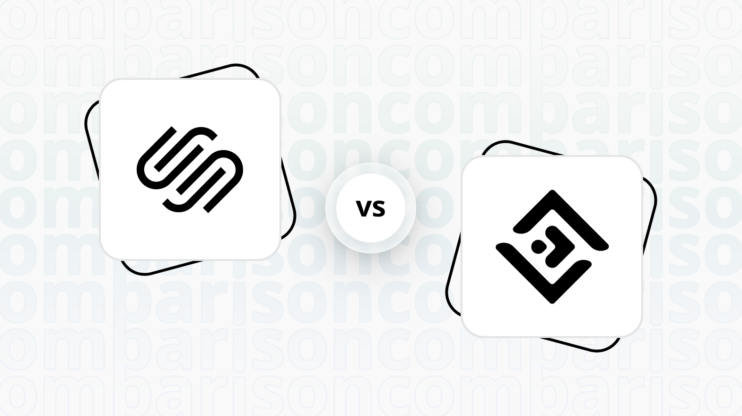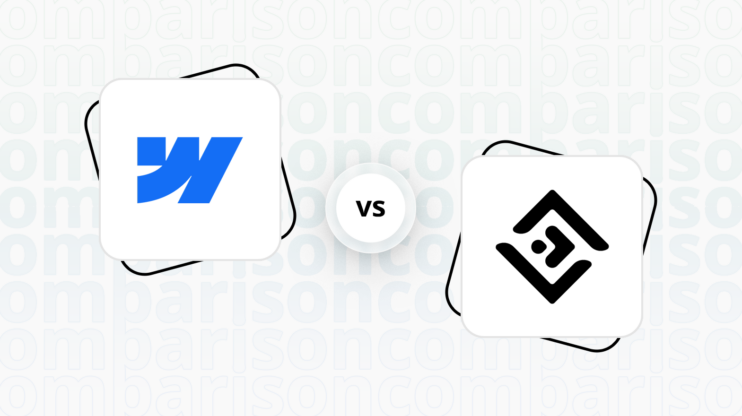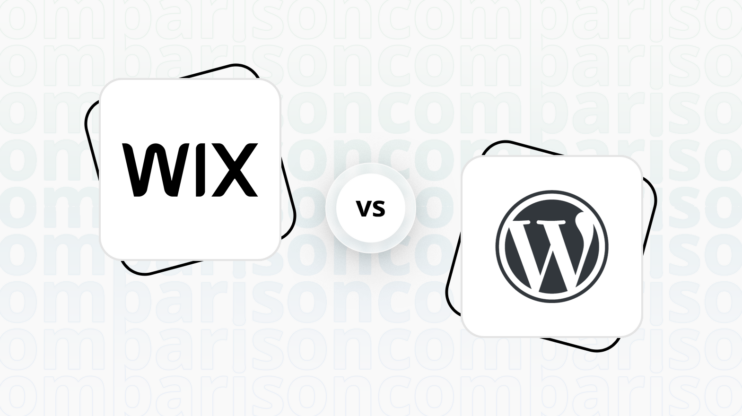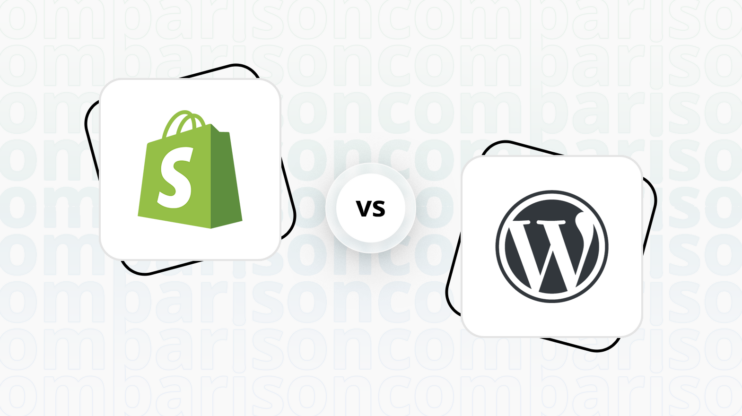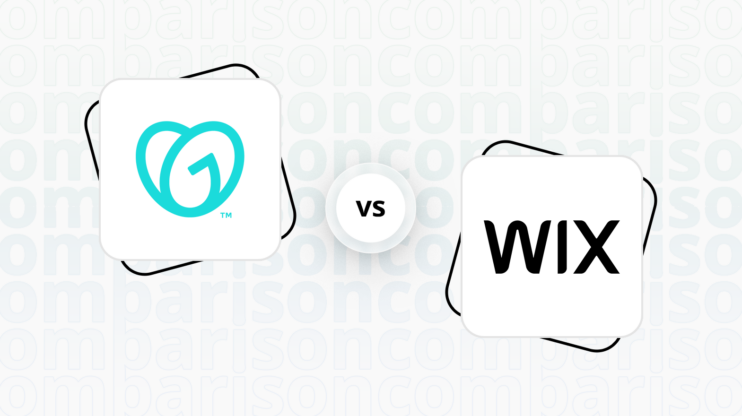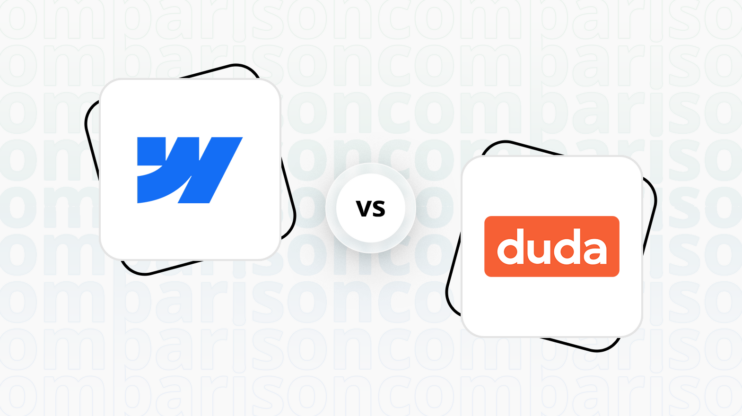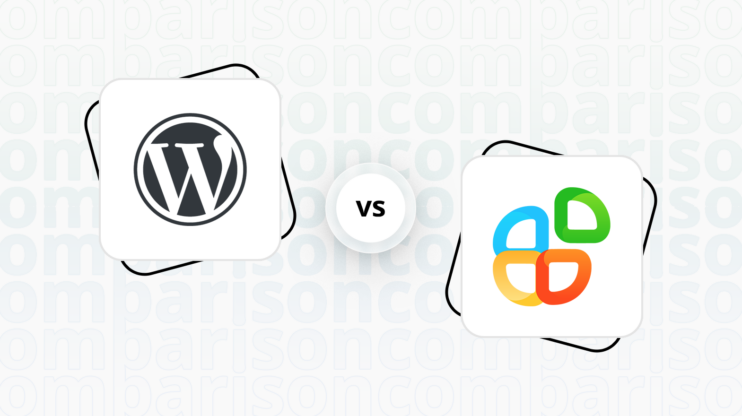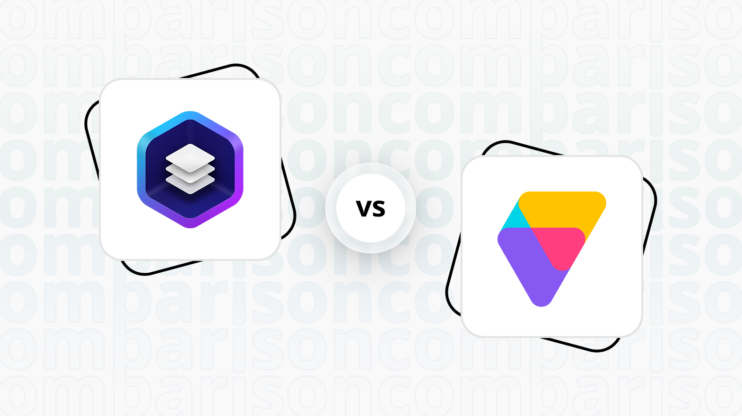Final verdict
Squarespace and Webflow are tied with an overall score of 7.9/10, each excelling in different areas to cater to diverse user needs.
-
Squarespace
is celebrated for its user-friendly interface, making it an excellent choice for individuals and small businesses looking for a straightforward way to create professional websites. It shines in ease of use, marketing features, and customer support, providing a comprehensive package for users who value simplicity and efficiency. Squarespace’s templates, while not as numerous as Webflow’s, offer a wide variety of designs that cater to different aesthetics and purposes. -
Webflow
, on the other hand, stands out for its powerful design tools and hosting quality, appealing to professional designers and users who require more control over their website’s design and functionality. It offers a higher degree of customization and flexibility, making it suitable for more complex projects that require detailed design work. Webflow’s learning curve is steeper, but it rewards users with the ability to create truly custom websites.

|

|
|
|---|---|---|
|
Design functionalities & templates |
8.0 |
8.6 |
|
Ease of use |
8.3 |
7.5 |
|
Ecommerce |
8.2 |
8.5 |
|
Website Editors |
8.3 |
9.0 |
|
Product testing options |
7.4 |
6.3 |
|
Price |
8.4 |
8.0 |
|
Hosting quality |
7.6 |
8.9 |
|
Website speed optimization |
6.7 |
8.1 |
|
Plugins/extensions and integrations |
6.8 |
5.5 |
|
Marketing features |
8.1 |
7.8 |
|
Customer support |
7.8 |
8.3 |
|
Website security |
8.8 |
7.8 |
|
AI capabilities |
7.5 |
8.3 |
|
User management |
7.4 |
8.3 |
| Overall |
7.9 |
7.9 |
Best for ecommerce
 8.2
8.2
 8.5
8.5
Verdict
: Webflow edges out Squarespace with a slightly higher score for ecommerce, indicating its superior capabilities for online stores, particularly in customization and payment gateways.
-
Squarespace
: Offers a user-friendly interface and a variety of customizable templates, making it a solid choice for businesses aiming for an aesthetically pleasing online store without extensive coding. Squarespace is well-suited for small to medium-sized ecommerce projects. -
Webflow
: Stands out for its advanced customization options and comprehensive ecommerce features, making it ideal for designers and businesses looking for a high degree of control over their online store’s design and functionality. Webflow is particularly beneficial for those requiring detailed product page customization and integration with major payment gateways.
Best for informational & business websites
 8.4
8.4
 8.6
8.6
Verdict
: With a narrow lead, Webflow is slightly better suited for informational and business websites, offering superior design flexibility and hosting quality. However, Squarespace remains a strong contender with its user-friendly interface and comprehensive features.
-
Squarespace
: Squarespace shines for those seeking a balance between ease of use and professional output. With a score of 8.4, it offers a wide array of templates and a user-friendly platform, making it ideal for businesses looking to establish a strong online presence without delving deep into web development. -
Webflow
: Edging out with a score of 8.6, Webflow is the platform of choice for users who prioritize design control and customization. It caters to a more technical audience, offering powerful design tools and hosting solutions that appeal to professional designers and businesses aiming for a unique web presence.
Detailed comparison
Design functionalities & templates
Design FunctionalitiesRepresents how well each platform allows for creative design and customization of websites.Score Components:
- Template Variety (30%): Range and quality of design templates.
- Customization (30%): Flexibility and options for design alterations.
- User Interface (20%): Ease and intuitiveness of the design process.
- Responsiveness (10%): Adaptability to different devices and screen sizes.
- Innovation (10%): Unique design features and tools.
 8.0
8.0
 8.6
8.6
🏆
Winner: Webflow.
If you’re looking for a platform that offers more creative control and a wide array of design features, Webflow is the preferred choice.
Squarespace boasts an impressive variety of website templates, offering over 120 pre-designed options to choose from. These templates cater to a wide range of needs and industries, from creative portfolios and sleek online stores to professional business websites and personal blogs.
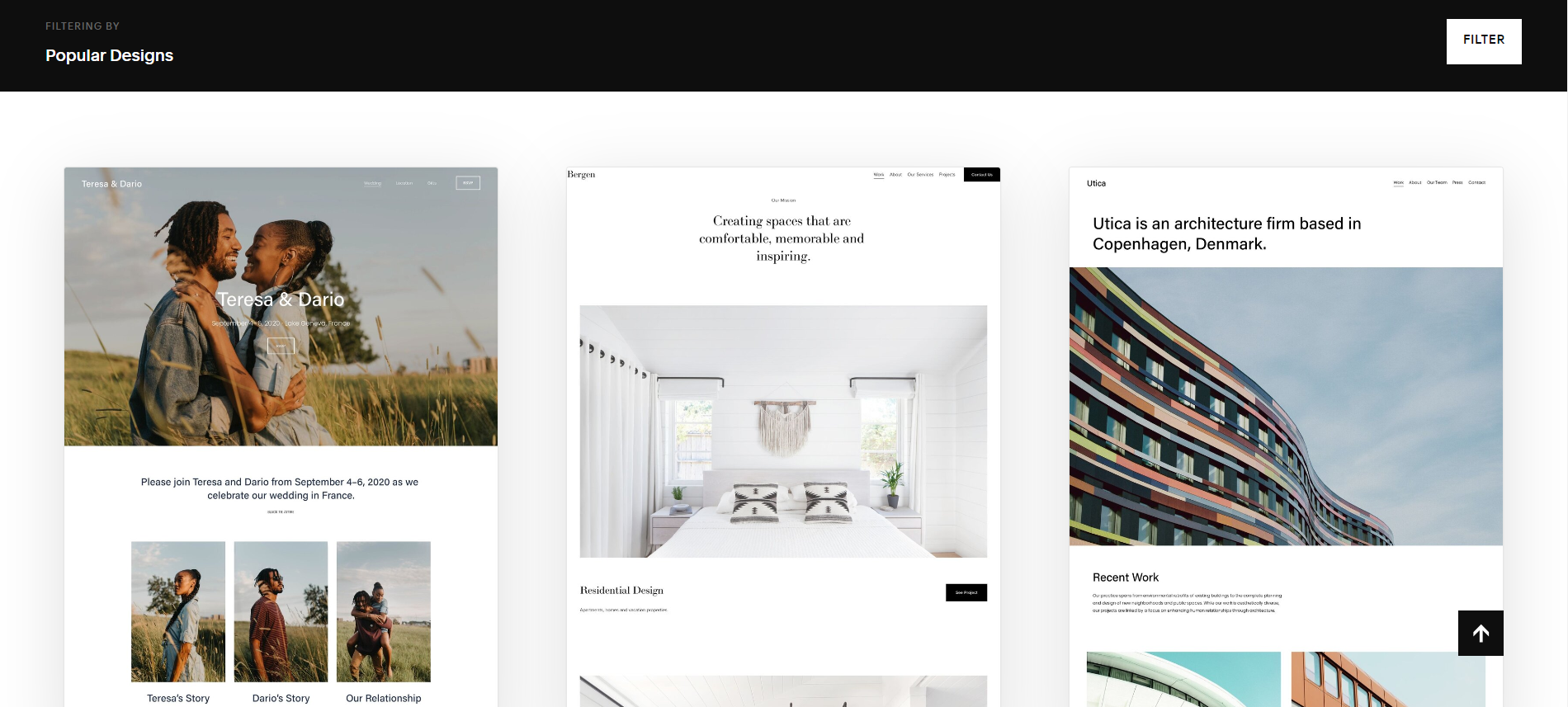

Compared to Squarespace, Webflow delivers a robust design experience with a diverse range of template and customization options. Boasting over 1000 pre-built templates covering various industries and website types, including free and premium options, Webflow ensures a constantly evolving library for users.
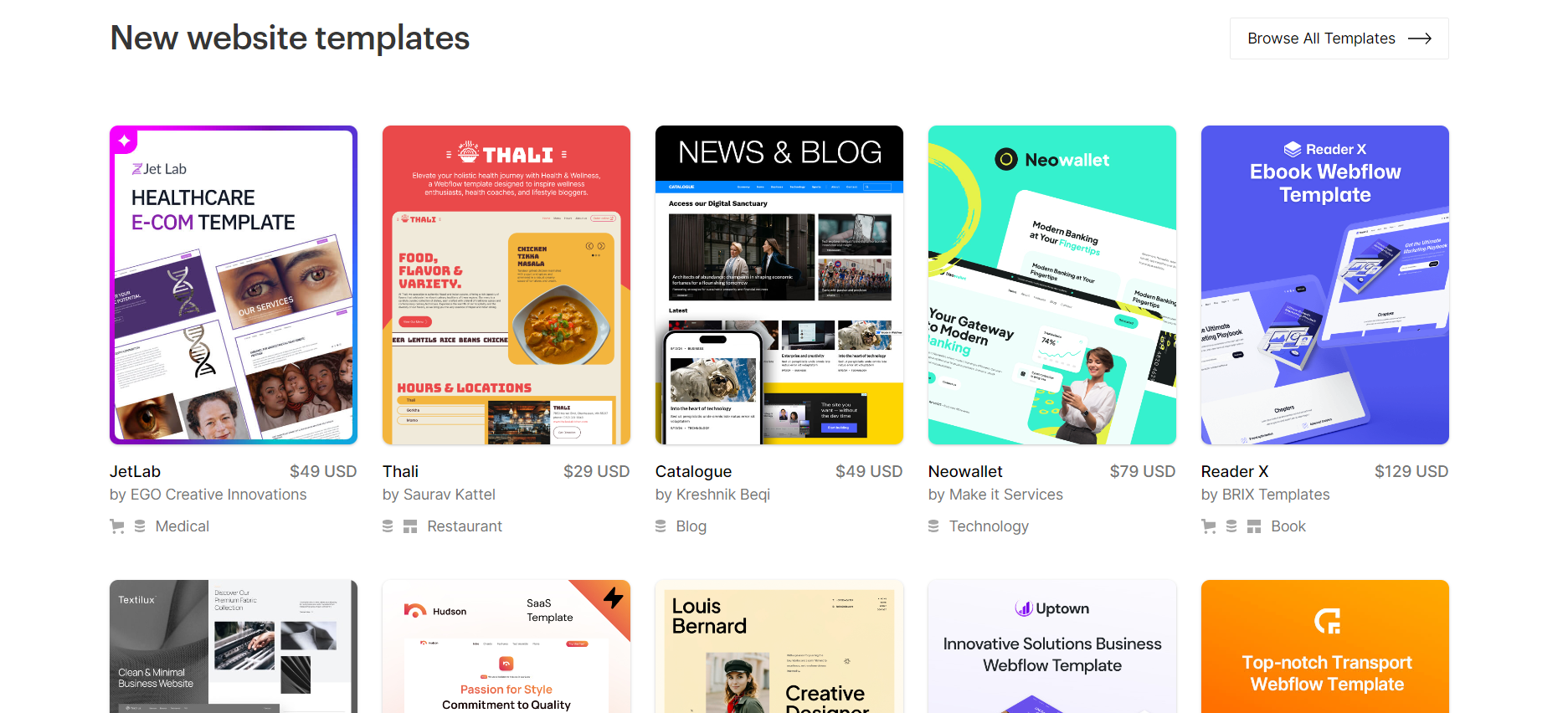
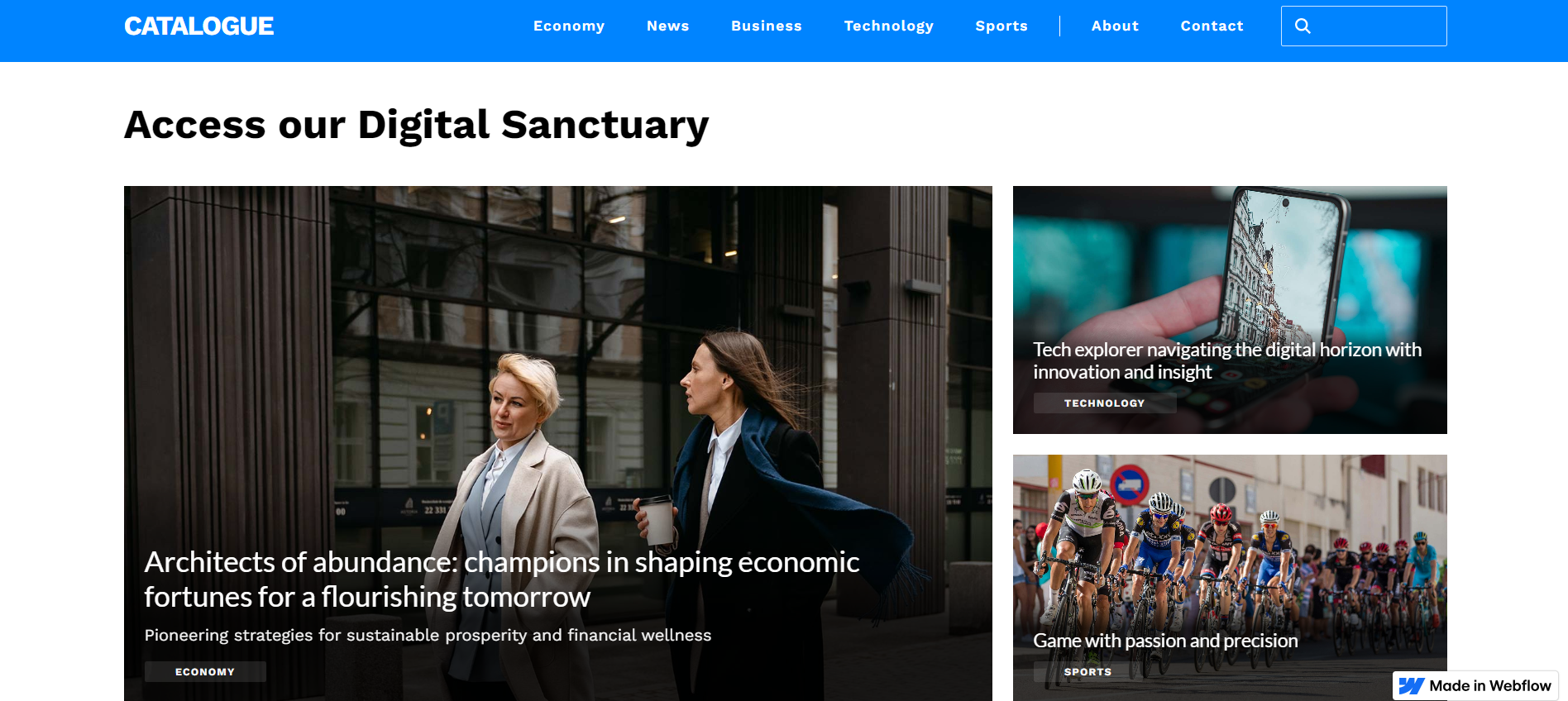
Get a head start on website creation with AI
Create a custom website tailored to your business needs 10X faster with 10Web AI Website Builder!
Ease of use
Ease of useReflects the platform’s overall user-friendliness.Score
Components:
- Learning curve (40%): Quickness and ease of getting started.
- Interface design (30%): Simplicity and intuitiveness of layout.
- User guidance (20%): Quality of tutorials and support.
- Flexibility (10%): Adaptability to various user skills.
 8.3
8.3
 7.5
7.5
🏆 Winner: Squarespace
. With a score of 8.3, Squarespace is known for its user-friendly interface and straightforward navigation, making it a great choice for those seeking a hassle-free website creation experience. Webflow, scoring 7.5, offers a visually intuitive interface but has a steeper learning curve, making it more suitable for experienced designers and developers.
Learning Resources
Both Squarespace and Webflow offer extensive learning resources. Squarespace provides a comprehensive Help Center, clear video tutorials, live webinars, an informative blog, and an active community forum. Webflow, on the other hand, offers a comprehensive set of learning resources through Webflow University, their YouTube Channel, and the Webflow Community.
For ecommerce
EcommerceMeasures the platform’s effectiveness in supporting online business activities.Score Components:
- Ecommerce themes and templates (20%): Variety and design of templates.
- Product management (25%): Ease of managing and organizing products.
- Payment options (25%): Variety and convenience of payment methods.
- Ecommerce features (20%): Features for managing an ecommerce store.
- Integration (10%): Compatibility with external e-commerce tools and services.
 8.2
8.2
 8.5
8.5
When it comes to ecommerce, both Squarespace and Webflow offer robust solutions. Squarespace is known for its user-friendly interface and customizable templates, making it a great choice for businesses looking to set up an online store. On the other hand, Webflow offers comprehensive ecommerce features such as easy store creation without coding, extensive customization options, and integration with major payment gateways.

|

|
|
|---|---|---|
|
Ecommerce themes and templates |
7.5 |
7.5 |
|
Product page customization |
7.0 |
8.3 |
|
Payment processing and commissions |
7.8 |
7.8 |
|
POS capabilities |
6.5 |
6.5 |
|
Payment gateways |
7.5 |
8.0 |
|
Product numbers |
6.8 |
7.0 |
|
Additional ecommerce features |
7.2 |
7.9 |
Squarespace ecommerce features:
- Intuitive interface
- Secure payment processing
- Built-in marketing tools
- SEO optimization
- Website analytics
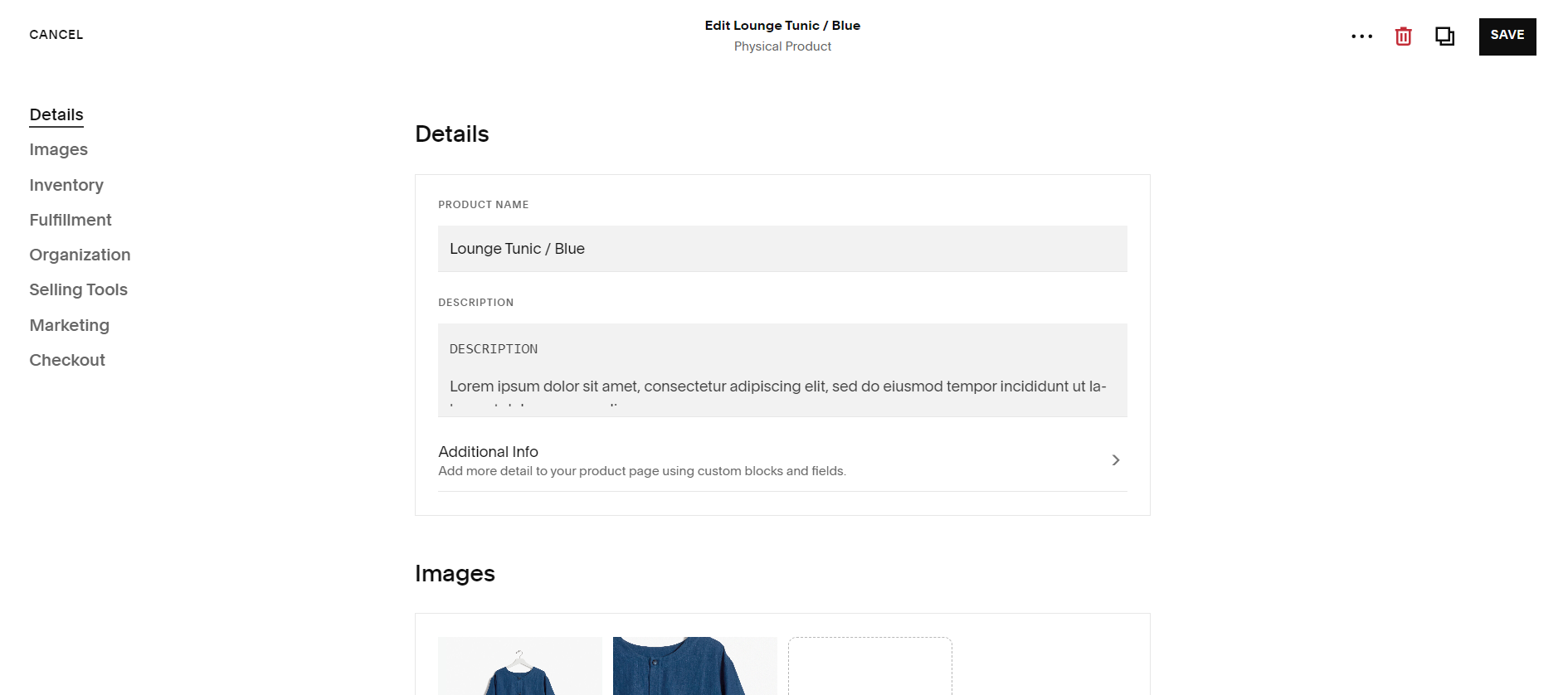
Webflow ecommerce features:
- Checkout and Payment Processing with Stripe, PayPal, etc.
- Marketing and Promotions
- Tax and Shipping calculations
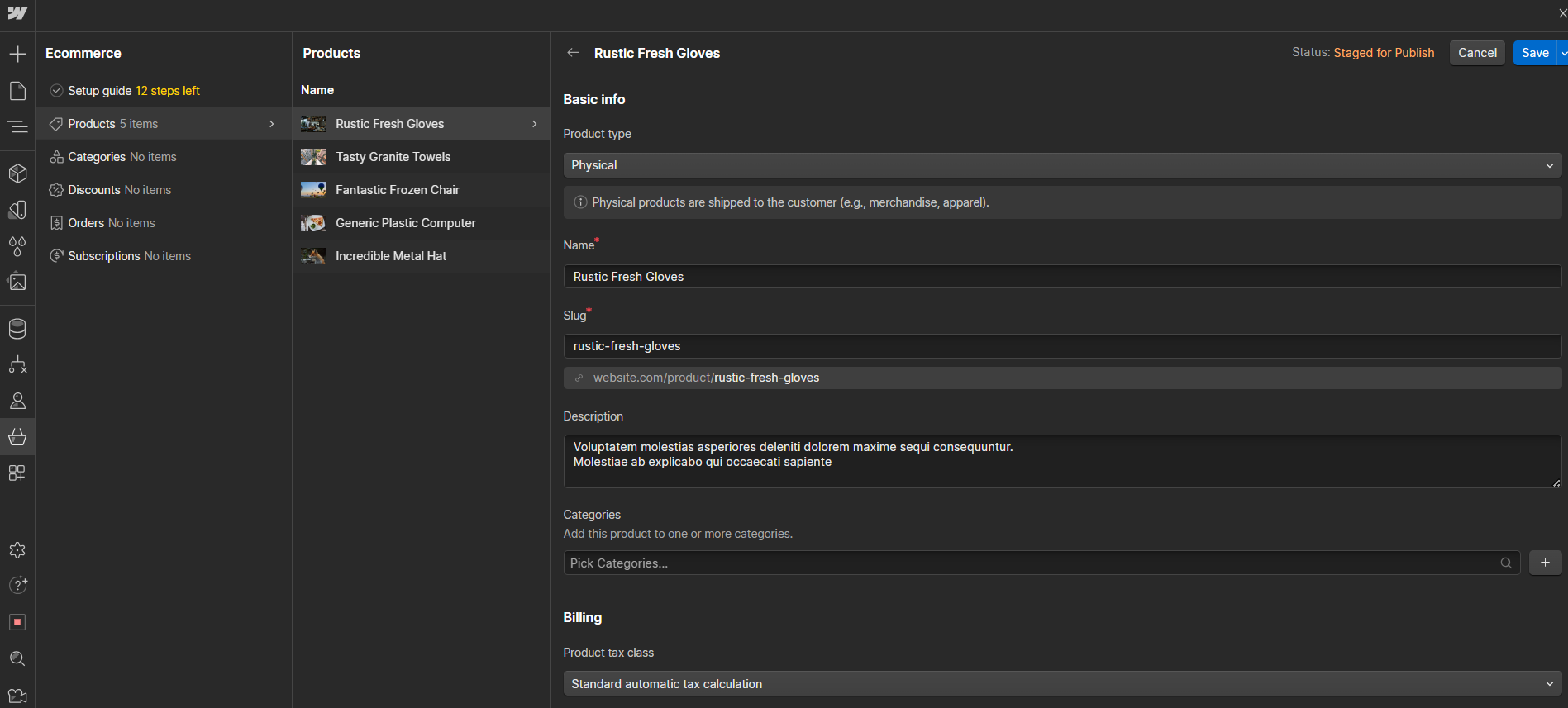
Ecommerce themes & templates
Squarespace provides a diverse selection of around 50 ecommerce templates, catering to various industries like fashion, beauty, home goods, and technology. These templates range from clean and minimalist to bold and colorful, accommodating different brand aesthetics and product types. On the other hand, Webflow offers a diverse range of ecommerce themes and templates designed to cater to various types of online stores, from fashion and technology to artisan crafts and children’s products. Each template comes equipped with built-in ecommerce functionality, allowing you to easily add products and manage your store without the need for coding.
Product page customization
Squarespace offers options for layout, design, and interactive elements on product pages. You can choose templates, customize colors, fonts, and content. Enhance engagement with features like customizable buttons, wishlists, comparisons, reviews, and related products. Advanced options include custom code injection and third-party app integrations. However, limitations include fixed core page structure and the need for technical expertise. Free templates have fewer customization options than premium ones.
Webflow, on the other hand, offers extensive customization options for eCommerce product pages, allowing users to design and personalize their pages without coding. It provides tutorials for creating product pages from scratch, offers responsive templates for various devices, and allows users to add custom code and dynamic content using Webflow’s CMS for maximum customization flexibility.
Payment processing
Squarespace provides flexible payment processing for online stores with integrated gateways like Stripe and PayPal. External gateways can be set up for specific needs. Transaction fees may apply depending on the plan and payment method. Security measures include PCI compliance and fraud prevention. Additional features include payment links, support for subscriptions, and the ability to accept international payments in various currencies.
Webflow provides a flexible and secure platform for payment processing and ecommerce through integrations with leading payment gateways like Stripe and PayPal. This allows users to accept a wide range of payments, including credit card transactions directly from their websites. Given the versatility of Stripe and PayPal, businesses can manage online sales efficiently, and these integrations likely support various transaction types, potentially including POS transactions for physical sales environments.
Website Editors
Website EditorsEvaluates the platforms’ website building and editing capabilities.Score Components:
- Customization tools (40%): Range and power of editing features.
- Editor usability (30%): User experience within the editor.
- Design flexibility (20%): Freedom in layout and design changes.
- Update and maintenance ease (10%): Simplicity of updating and maintaining the site.
 8.3
8.3
 9.0
9.0
🏆
Winner: Webflow
. Webflow, with a score of 9.0, is a cloud-based platform that combines web design, CMS, and hosting, enabling users to visually design responsive websites without writing code. It offers a drag-and-drop interface, integrated SEO tools, ecommerce functionalities, and the ability to add animations and interactions, making web development accessible for designers and powerful for developers. Webflow streamlines the process of web creation, from design to launch, offering both high customization and ease of use.
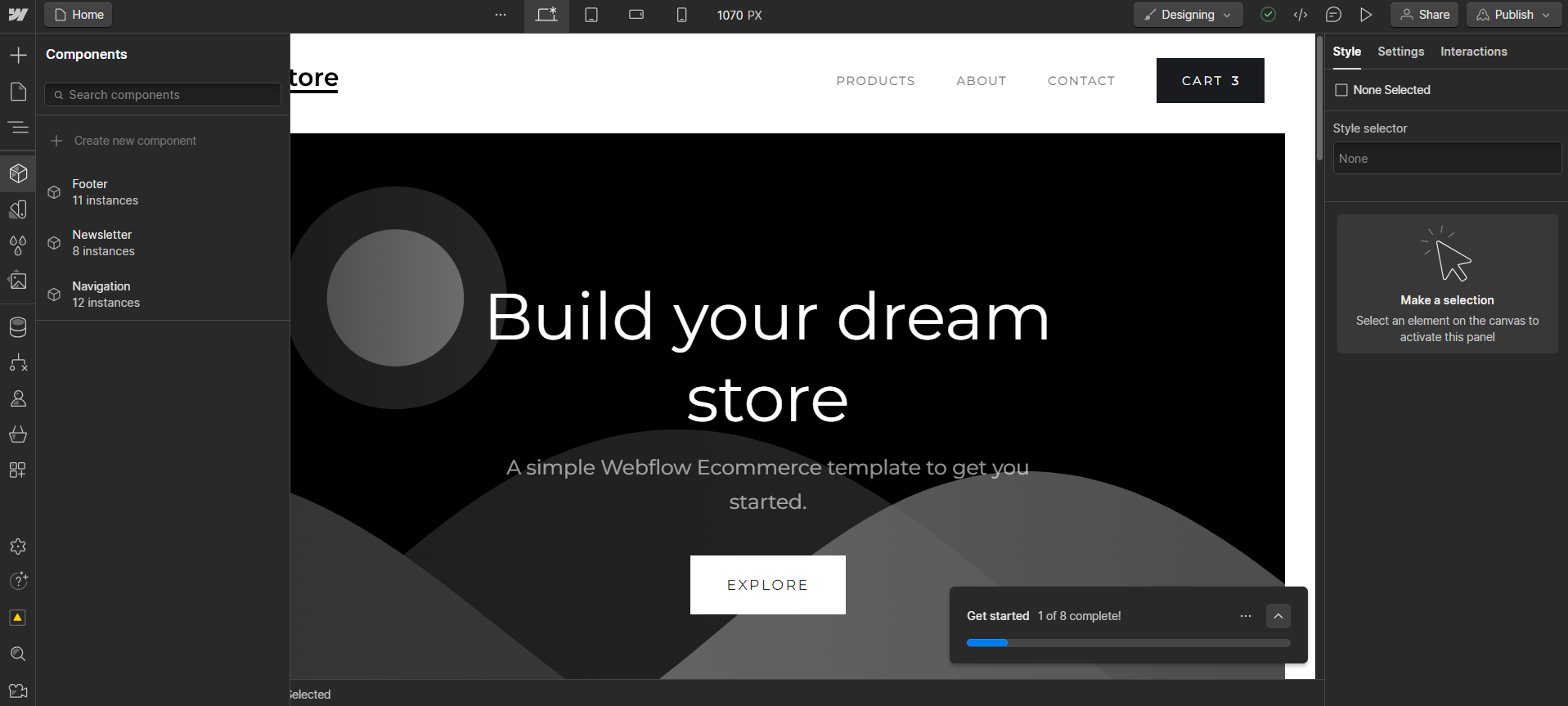
Squarespace’s user-friendly editor, scoring 8.3, allows easy drag-and-drop website creation without coding. With visually appealing templates and customization options, it caters to beginners and pros alike. The real-time editing experience ensures instant previews. Prioritizing content, it’s mobile-responsive and offers functional features like forms, social media integration, and online stores. Squarespace seamlessly integrates with tools for extended capabilities.
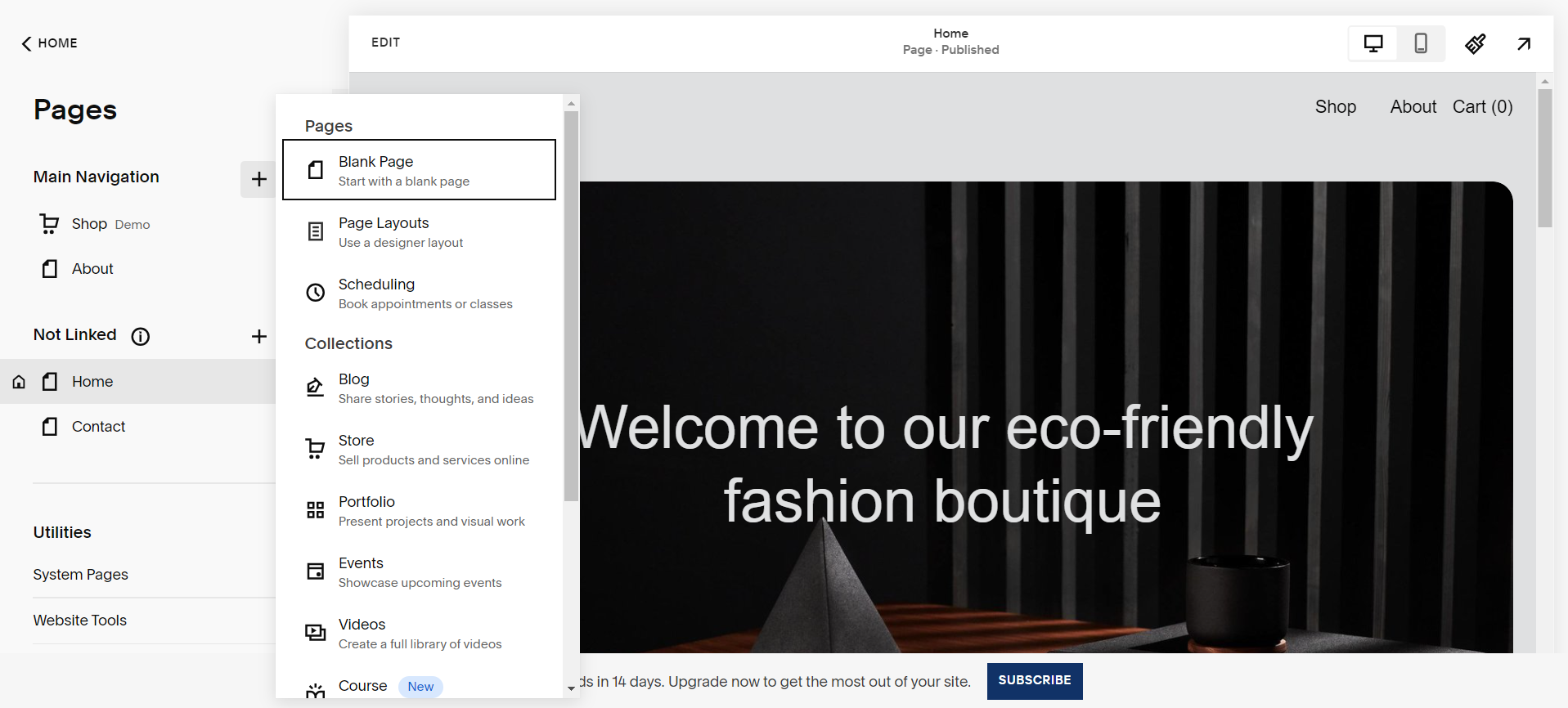
Mobile editor/app
 8.5
8.5
 7.0
7.0
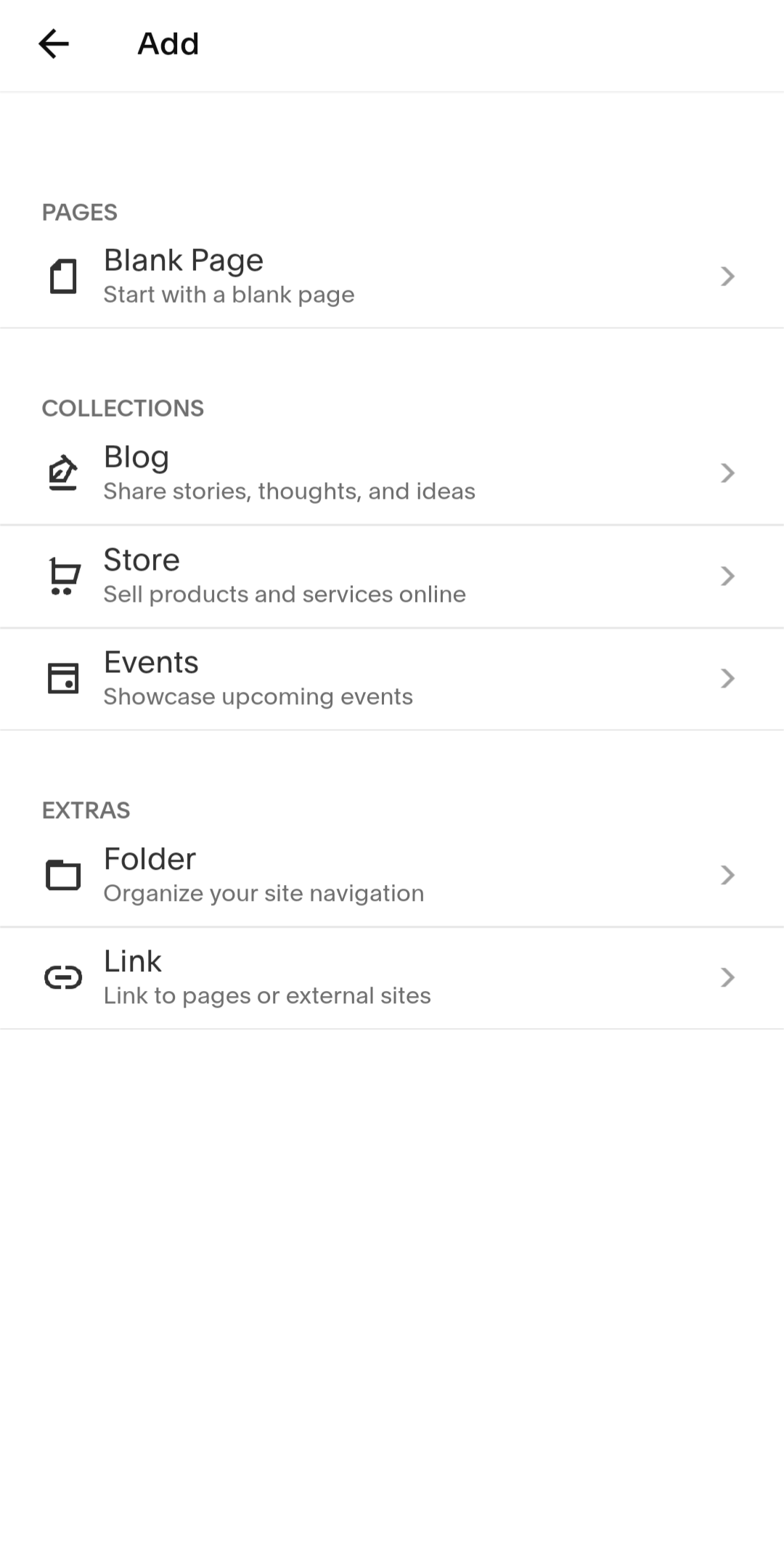
🏆
Winner: Squarespace
. Both Squarespace and Webflow offer mobile solutions for managing your website, but they cater to different needs and platforms. Squarespace has a mobile app that allows users to manage their website, edit content, view analytics, manage their online store, and schedule social media posts. However, it does not offer the full range of functionalities available on the desktop version.
On the other hand, Webflow does not have an official mobile editor app. There is a third-party app called EditFlow, but it is only available for iOS. This limits the accessibility of Webflow’s mobile editing capabilities to a specific user base.
In summary, Squarespace receives a higher rating due to its comprehensive mobile app that caters to a wider range of users, while Webflow’s mobile editing capabilities are limited to a third-party app available only on iOS.
Product testing options
Product Testing OptionsAssesses the options for trying out platform features before commitment.Score Components:
- Trial quality (40%): Extent and usefulness of the trial or free version.
- Feature accessibility (30%): How many features are available to test.
- Trial duration (20%): Length of the trial period.
- Ease of transition (10%): Smoothness of moving from trial to paid plans.
 7.4
7.4
 6.3
6.3
Overall Result
:
Squarespace Wins
. Squarespace scores 7.4, offering a 14-day free trial and the possibility to test most of the premium features. Webflow, scoring 6.3, offers a free version with basic features but lacks a trial version and a money-back guarantee.

|

|
|
|---|---|---|
|
Free Plan |
No |
Yes |
|
Trial Duration |
14 days |
No trial version |
|
Testing Premium Features |
Most, except for some features |
Basic features with free plan |
|
Money Back Guarantee |
Full refund within 14 days |
No |
Price
PriceLooks at the cost-effectiveness and value for money of each platform.Score Components:
- Plan value (40%): What each pricing tier offers.
- Transparency and clarity (30%): Clearness of pricing structures.
- Flexibility of plans (20%): Range of options to suit different budgets.
- Hidden costs (10%): Additional expenses not included in the plan.
 8.4
8.4
 8.0
8.0
Squarespace and Webflow both offer a range of pricing options, but Squarespace tends to be more affordable, while Webflow offers more advanced features for professional designers and larger businesses.

|

|
|
|---|---|---|
|
Free |
No offering at this amount. |
Starter (Free): Limited features for new sites, including 2 static pages and 50 form submissions lifetime. |
|
$10-$15 |
Personal ($12/month): Build a basic website with limited features for personal use. Access to basic templates, mobile-friendly design, and some social media integrations. Value for price: 6.0 |
No offering at this amount. |
|
$15-$20 |
Business ($16/month): Upgrade features with custom domain, SEO tools, marketing tools like email campaigns, and analytics. Value for price: 7.5 |
Basic ($18/month): Suitable for simple sites with a custom domain, including basic SEO controls and 500 monthly form submissions. And 100 pages. Value for price: 6.5 |
|
$20-$30 |
Commerce ($26/month): Perfect for online stores with built-in eCommerce functionality (unlimited products), secure checkout, inventory management, and marketing tools. Value for price: 8.5 |
CMS ($29/month): For content-driven sites with 2,000 CMS items, 1,000 monthly form submissions, and full API access. And 150 website pages. Value for price: 7.5 |
|
$40-$45 |
Advanced Commerce ($40/month): Cater to high-volume stores with advanced eCommerce features like abandoned cart recovery, product subscriptions, gift cards, and real-time shipping quotes. Value for price: 9.0 |
Standard ($42/month): For new businesses with up to 500 ecommerce items, includes basic ecommerce features, and 2% transaction fee Value for price: 8.5 |
|
$45-$50 |
No offering at this amount. |
Business ($49/month): High traffic capacity, advanced features like site search, and up to 10 content editors. Value for price: 8.0 |
|
$80-$90 |
No offering at this amount. |
Plus ($84/month): Higher volume businesses with 0% transaction fees, up to 5,000 ecommerce items, and advanced features. Value for price: 9.0 |
|
$200+ |
No offering at this amount. |
Advanced ($235/month): Scalable solution for large online stores with up to 15,000 ecommerce items and the highest caps and 0% transaction fees. Value for Price: 9.5 |
location. As a result in rare cases the prices displayed here can differ from the ones you see on their
websites.
Hosting quality
Hosting
qualityExamines the reliability and performance of the hosting solutions.Score Components:
- Uptime (40%): Consistency and reliability of website availability.
- Speed (30%): Loading times and performance.
- Bandwidth and storage (20%): Sufficiency of resources provided.
- Data centers (10%): Quality and distribution of hosting infrastructure.
 7.6
7.6
 8.9
8.9
Winner: Webflow
. Webflow’s managed hosting, with a 99.99% uptime guarantee on its Enterprise plan and a globally distributed network of data centers, provides a robust and reliable hosting solution. Squarespace, while offering a 99.9% uptime guarantee and strategically scattered data centers, falls slightly short in comparison. Webflow’s superior hosting quality earns it a higher rating.

|

|
|
|---|---|---|
|
Do they offer hosting? |
Yes, included in all of their plans | Yes, included in all of their plans. Offers fast, scalable, and secure hosting, with good performance and response times. Depending on the plan, offers up to 400GB bandwidth and 300k monthly visitors. Daily backups. |
|
Data Centers: |
Squarespace’s data centers are strategically scattered across North America, Europe, and Asia | Webflow doesn’t have its own data centers. Instead, it relies on a globally distributed network of data centers from Amazon Web Services (AWS) and Fastly. |
|
Type of hosting: |
Proprietary cloud-based hosting | Managed Hosting |
|
Uptime: |
99.9% | 99.99% |
|
Uptime Guarantee: |
Yes | Only Enterprise plan, 99.99% |
Website Speed Optimization
Website Speed OptimizationEvaluates optimization of website loading timesScore Components:
- PageSpeed Score (30%): Google’s score indicating performance optimization.
- Loading Time (30%): The average time until a website is fully interactive.
- Mobile Optimization (15%): Optimization effectiveness for mobile devices.
- Resource Optimization (15%): Optimizing images, scripts, and other heavy resources.
- CDN Usage (10%): Use of CDN to enhance speed across geolocations.
 6.7
6.7
 8.1
8.1
🏆 Winner: Webflow
Both Squarespace and Webflow prioritize website performance and page speed, but Webflow’s custom cache settings, custom element lazy loading, automatic minification, responsive templates, and CDN give it an edge over Squarespace.

|

|
|
|---|---|---|
|
Focus |
Responsive design, image optimization |
Custom Cache Settings, Custom Element Lazy Loading |
|
Performance Tools |
CDN, code minification, lazy loading |
Automatic Minification, Responsive templates, CDN |
|
Key Strategies |
Responsive design, image optimization, CDN, code minification, lazy loading |
Custom Cache Settings, Custom Element Lazy Loading, Automatic Minification, Responsive templates, CDN |
|
Load Times |
0.7s to 9.1 s (Average: 2.9s) |
Below 2 seconds average |
|
Page Speed Scores Range |
20/100 to 93/100 (Average: 62.7/100) |
77.2/100 |
|
Core Web Vitals Improvement |
Emphasis on LCP, FID, CLS improvements |
Improving components’ usability, and emphasis on LCP, FID and CLS |
Webflow’s focus on custom cache settings, custom element lazy loading, automatic minification, responsive templates, and CDN has resulted in an average load time of below 2 seconds and a PageSpeed score of 77.2/100. They have also made improvements in components’ usability and emphasized on LCP, FID, and CLS.
On the other hand, Squarespace’s strategies for speed optimization include responsive design, image optimization, CDN, code minification, and lazy loading of images. This has resulted in load times ranging from 0.7s to 9.1 s (Average: 2.9s) and PageSpeed scores ranging from 20/100 to 93/100 (Average: 62.7/100). They have also placed an emphasis on LCP, FID, and CLS improvements.
Get a head start on website creation with AI
Create a custom website tailored to your business needs 10X faster with 10Web AI Website Builder!
Plugins and integrations
Plugins and integrationsMeasures the range and effectiveness of additional plugins and integrations.Score Components:
- Variety of options (40%): Range of available add-ons.
- Integration smoothness (30%): Ease of integrating plugins into the site.
- Quality of plugins (20%): Functionality and reliability of the options.
- Custom integration capabilities (10%): Support for custom or third-party integrations.
 6.8
6.8
 5.5
5.5
🏆 Winner: Squarespace.
With a score of 6.8, Squarespace takes the lead over Webflow, which scores 5.5. Squarespace may not have an official app store, but it supports a wide range of integrations and extensions through custom code injection and third-party tools. Webflow, on the other hand, doesn’t offer traditional plugins or extensions but provides a built-in library of website elements and functionalities. It also supports third-party integrations, but the number and pricing of these options can vary.
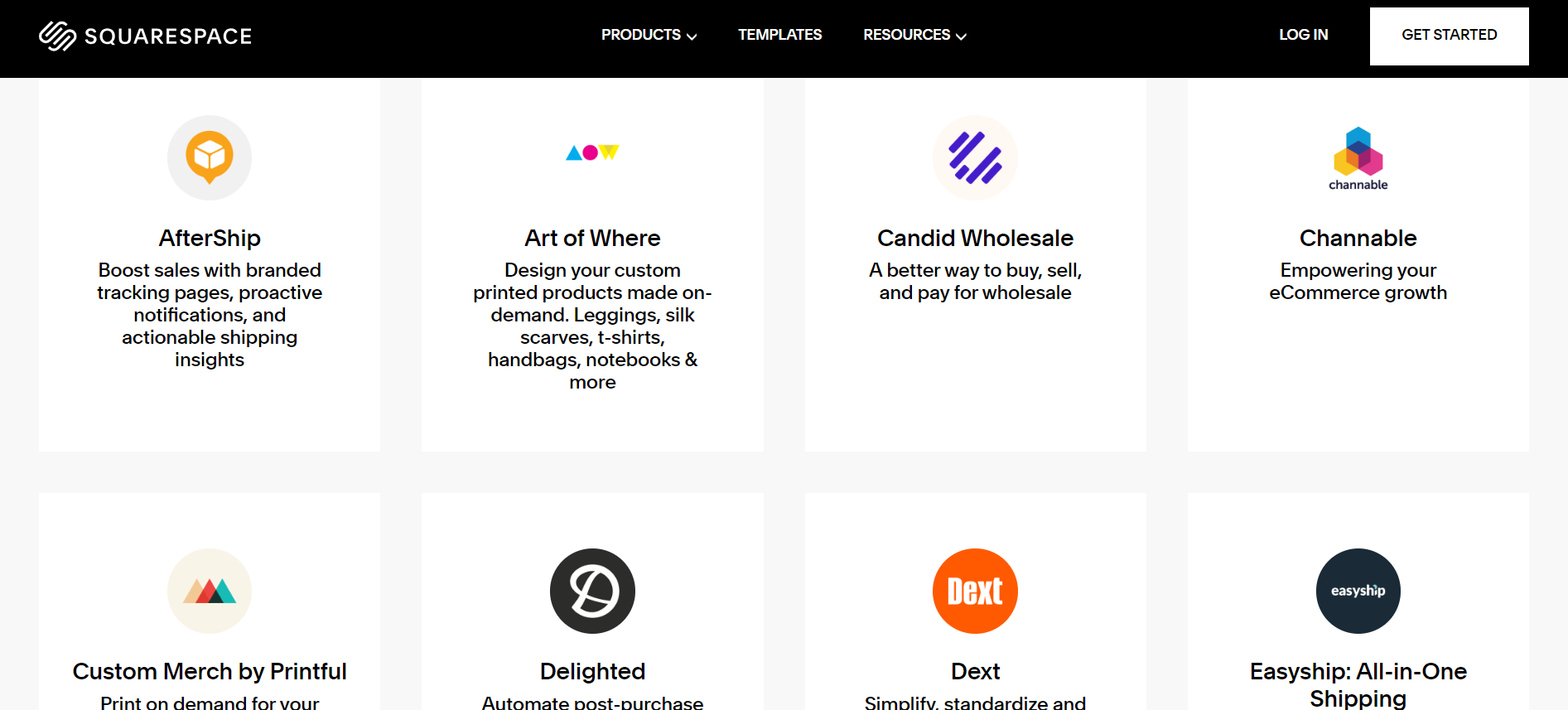
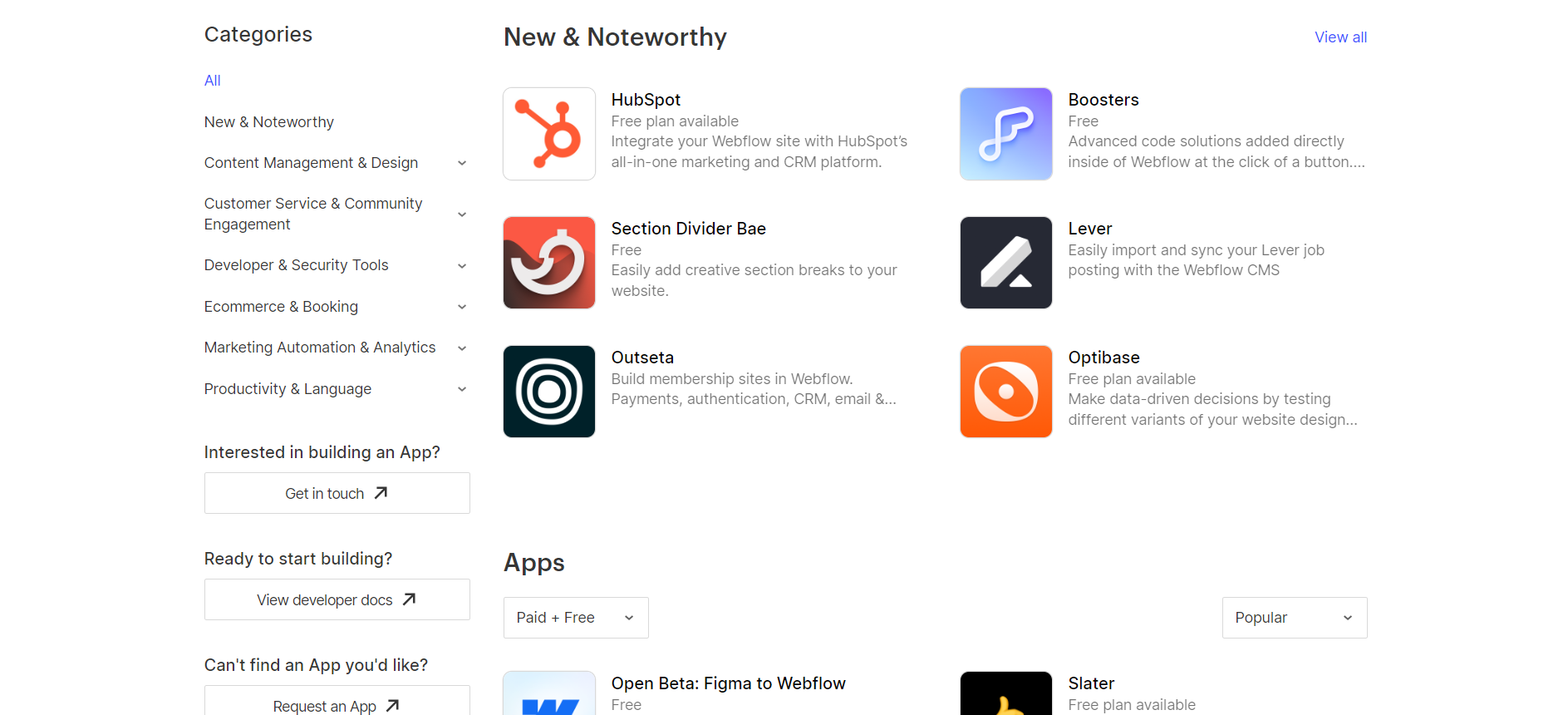
Marketing Features
Marketing featuresAssesses tools and options available for marketing.Score Components:
- SEO tools (40%): Effectiveness of SEO features.
- Marketing automation (30%): Availability and quality of marketing tools.
- Social Media integration (20%): Ease and depth of social media connectivity.
- Email marketing (10%): Quality and usability of email marketing tools.
 8.1
8.1
 7.8
7.8
🏆
Overall Winner: Squarespace
. Squarespace stands out for its direct linking and selling on social platforms, detailed insights into website performance and visitor behavior, and integration with Google Ads. Webflow, while strong in content sharing and audience engagement on social platforms, falls slightly short in comparison.

|

|
|
|---|---|---|
|
SEO Tools |
|
|
|
Email Marketing |
|
|
|
Blogging |
|
|
|
Social Media Integration |
Direct linking and selling on social platforms, plus feed displays on-site. |
Simplifies content sharing and audience engagement on major social platforms. |
|
Analytics and Reporting |
Detailed insights into website performance and visitor behavior. |
Integrates with Google Analytics for comprehensive web traffic and behavior analysis. |
|
Ads and Promotions |
Integration with Google Ads and tools for managing sophisticated ad campaigns. |
Supports ad and promotion management through integration with platforms like Google Optimize. |
Customer Support
Customer supportEvaluates the quality and availability of support options.Score Components:
- Response time (40%): Speed of support responses.
- Support quality (30%): Effectiveness and helpfulness of the support.
- Availability (20%): Range of support channels (phone, chat, email).
- Resource richness (10%): Quality of self-help and educational materials.
 7.8
7.8
 8.3
8.3
🏆 Winner: Webflow
. Webflow takes the lead in this category with a customer support score of 8.3. They offer 24/7 customer support through various channels including live chat, email, and a community forum. Additionally, Webflow provides extensive documentation and video tutorials to help users navigate their platform and troubleshoot common problems.
Squarespace also provides a variety of customer support options, including live chat, email, a community forum, and a comprehensive help center. However, their live chat and phone support operate only on weekdays from 6 AM to 6 PM PST, while email support is available 24/7. Despite this, Squarespace still manages to score a respectable 7.8 in customer support.
Security
SecurityLooks at the platforms’ security measures and data protection.Score Components:
- Data protection (40%): Safeguards for user and customer data.
- SSL and encryption (30%): Implementation of secure connections.
- Compliance (20%): Adherence to industry security standards.
- Regular updates (10%): Frequency of security updates and patches.
 8.8
8.8
 7.8
7.8
🏆
Winner: Squarespace
. Squarespace and Webflow both prioritize data privacy and security, implementing measures such as secure server storage, encryption, strict access controls, and compliance with regulations. However, Squarespace edges out with a higher security score of 8.8 compared to Webflow’s 7.8.
Squarespace offers secure hosting, SSL certificates, vulnerability scanning, malware and spam filters, two-factor authentication, data encryption, and compliance with security regulations like PCI-DSS and GDPR. They encourage users to adopt a shared responsibility approach and take additional steps to enhance the security of their websites.
Webflow, on the other hand, secures data transmission with SSL encryption, conducts regular security audits and updates to protect against vulnerabilities, and implements strong password requirements for user accounts. They also offer two-factor authentication for added security.
In conclusion, while both platforms take substantial measures to ensure security, Squarespace’s higher security score and comprehensive security measures make it the winner in this category.
AI Capabilities
AI capabilitiesMeasures the effectiveness of AI-driven features and tools.Score Components:
- Automation efficiency (40%): Impact of AI on streamlining processes.
- Personalization (30%): AI-driven customization for users or customers.
- AI-Assisted design (20%): Role of AI in website design and functionality.
- Data analysis (10%): Use of AI in interpreting user data and analytics.
 7.5
7.5
 8.3
8.3

|

|
|
|---|---|---|
|
AI Builder |
No fully automated AI website builder |
AI features announced, not yet implemented |
|
AI Ecommerce Features |
AI-powered copywriting, SEO optimization, product suggestions |
|
|
AI Content Generation |
AI-generated product descriptions, website copy, blog posts |
|
|
Additional AI Features |
SEO optimization, email marketing insights, inventory management |
Planned AI features for design elements and content management |
🏆 Winner: Squarespace
. Squarespace, with a score of 7.5, offers various AI-powered features that streamline the website building process and enhance the eCommerce experience. Although it doesn’t have a fully automated AI website builder, its AI capabilities in content generation, SEO optimization, and email marketing provide valuable assistance to users.
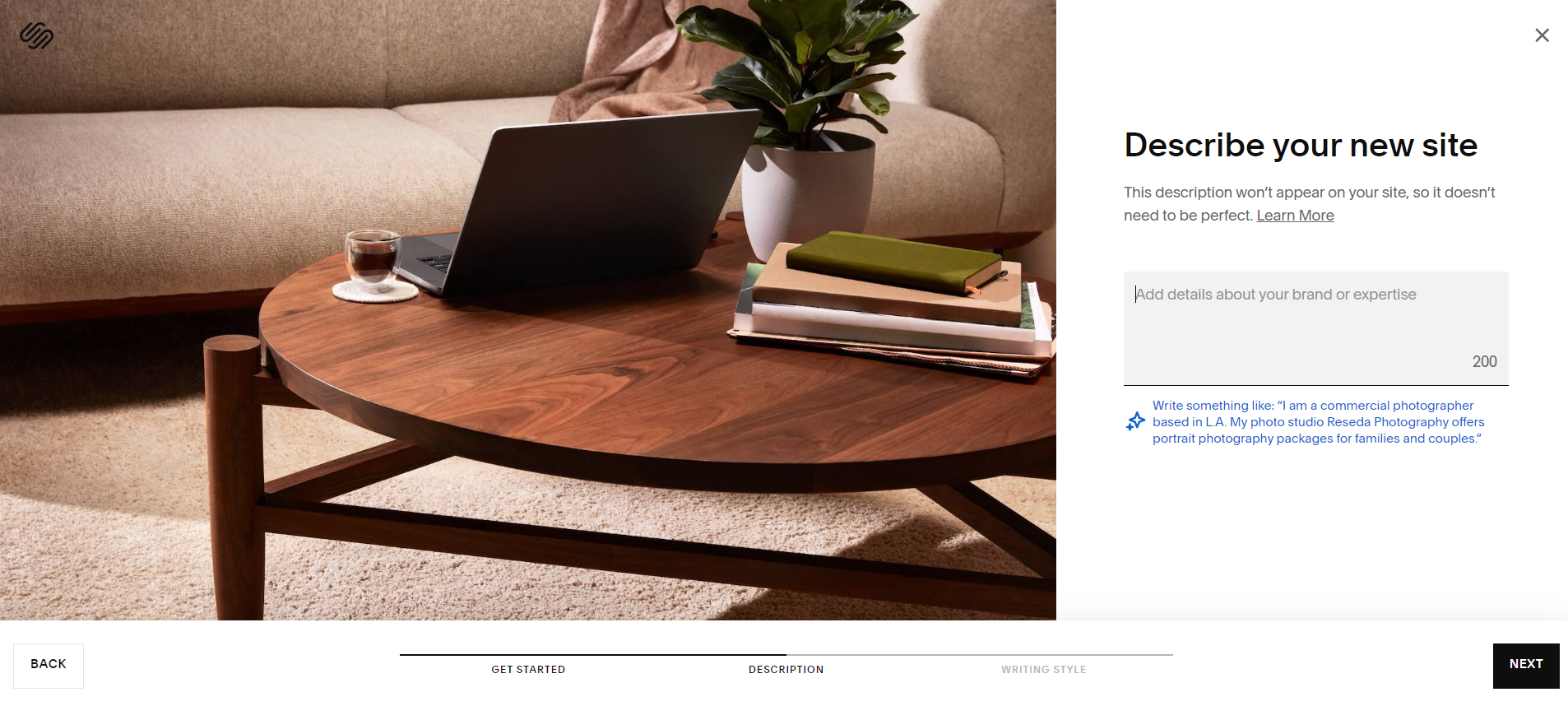
Webflow, scoring 8.3, has announced plans to introduce AI features, but they are not yet implemented. The planned features aim to improve the visual development learning journey, offer AI-customized templates, and provide AI-powered content management capabilities. However, as of now, Webflow lacks AI capabilities in ecommerce and content generation.
User Management
User ManagementAssesses the platforms’ capabilities in managing user roles, permissions, and accessibility.Score Components:
- Role Customization (40%): Flexibility in creating and defining user roles and
permissions. - Ease of Management (30%): User interface and tools for managing users.
- Access Control (20%): Effectiveness of access control measures for different user
levels. - Scalability (10%): Ability to manage a growing number of users efficiently.
 7.4
7.4
 8.3
8.3
🏆 Winner: Webflow
. Both Squarespace and Webflow offer different plans with varying user management capabilities.
- Squarespace allows one owner for the Personal Plan, 2 collaborators for Business and Commerce Plans, and unlimited users for the Enterprise Plan. Each user can have customizable access privileges.
- Webflow offers unlimited editors for Core, Growth, and Enterprise plans, while others limit content editors to 3 or 10 per site. Access levels include Designer for full access and Editor for content editing.
Squarespace User Roles and Access Levels:
| Role | Description | Access Highlights |
|---|---|---|
| Owner | The primary user who created the website and has full access. | Full site access, including billing, site settings, content editing, and member management. |
| Administrator | Users granted nearly full access to manage the site alongside the Owner. | Access to most areas except for some owner-specific settings like ownership transfer. |
| Content Editor | Users focused on adding and managing site content without full site access. | Can add, edit, and delete content on pages, blog posts, and manage comments. |
| Billing | Users who manage the subscription and billing details. | Access to billing information and the ability to update subscription details. |
| Store Manager | Users who manage the ecommerce aspects of the site. | Can manage inventory, fulfill orders, manage customers, and view sales analytics. |
| Custom | A role defined by the site owner or administrators with specific access. | Customizable access as defined by the Owner or Administrators, can vary widely between sites. |
Webflow User Roles and Access Levels:
| Role | Description | Access Highlights |
|---|---|---|
| Workspace Owner | Full control over Workspace settings and member management. | Edit settings, manage billing, access/edit all sites, invite/remove members, manage permissions. |
| Workspace Admin | Similar to the owner with some restrictions. | Edit settings, manage billing, access/edit all sites, invite/remove members (except owner), manage permissions. |
| Workspace Member | Limited control focused on site interaction. | Download invoices, access/edit sites, invite members. |
| Workspace Guest | Temporary collaborators with limited access. | Access/edit sites. |
| Workspace Commenter | Limited to commenting for feedback on sites. | Create/view/resolve comments, preview sites. |
| Site Admin | Full control at the site level. | Manage permissions, delete/transfer sites, billing management, design and publish changes. |
| Can Design | Design capabilities with some restrictions on publishing. | Design in Designer, create/modify classes and components, publish changes with permission. |
| Can Design (Limited) | Restricted design capabilities for Enterprise customers. | Create new classes, modify created classes, limited publishing capabilities. |
| Can Edit | Content editing without full design privileges. | Edit text/links/images, manage assets, publish Collection items and Ecommerce products. |
| Can Comment (Site Level) | Commenting for feedback at the site level. | Create/view/resolve comments, preview sites. |
Additional Features

|

|
|
|---|---|---|
|
SSL Certificate |
|
|
|
Custom Domain |
|
|
|
Free Custom Domain Included |
|
|
|
International Domains |
|
|
|
Mobile Responsive |
|
|
|
Page Speed |
|
|
|
Website Builder Mobile App |
|
|
|
Convert a Website To An App |
|
|
|
Website Analytics |
|
|
|
Multilingual Sites |
|
|
|
Multiple Users |
|
|
User Feedback
Squarespace is well-liked for its easy-to-use interface and versatile tools, making it ideal for those who aren’t tech-savvy. It offers various features like website creation, SEO, online selling, and more, catering to different users. Customers appreciate its good customer support and visually appealing templates, creating a professional online presence. However, some users find issues with domain transfer/setup, limited customization options, and consider the pricing slightly higher. There are also occasional concerns about customer service and technical limitations like template rigidity and missing features.
Webflow receives high praise for its user-friendly interface, eliminating the need for coding while offering extensive design flexibility. Users appreciate its scalability, cost-effectiveness, and seamless integration of essential features like forms and CMS. However, some users note a slight learning curve and occasional limitations, particularly in ecommerce functionalities and content management. Overall, Webflow proves to be a powerful tool for building and managing websites, offering robust features for both beginners and experienced developers, albeit with some room for improvement in certain areas like collaborative editing and content management.
The making of this blog
We followed a clear, step-by-step process to write and research this article.
FAQ
Which platform is better for beginners, Squarespace or Webflow?
Can I use both Squarespace and Webflow for ecommerce?
How do Squarespace and Webflow differ in terms of customization and design flexibility?
What are the major differences in pricing and value between Squarespace and Webflow?
Which platform offers better customer support, Squarespace or Webflow?










